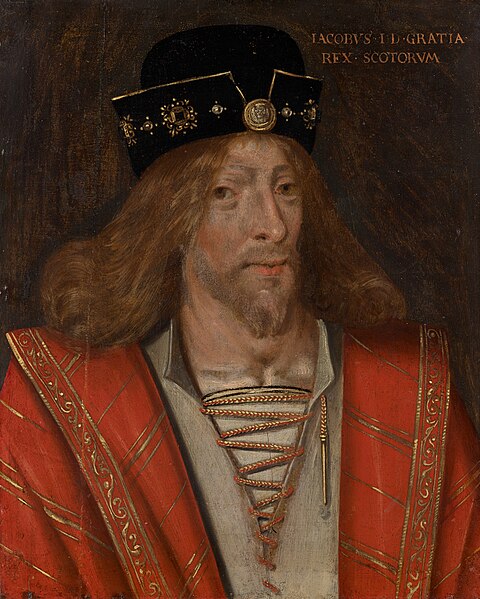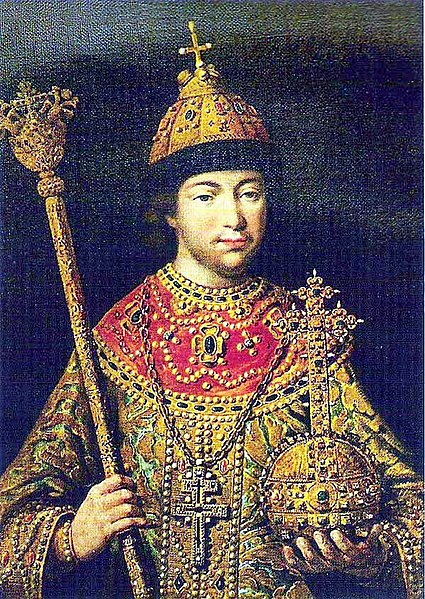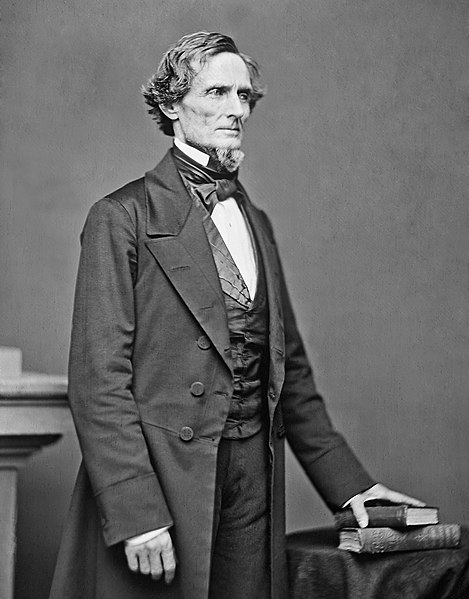This article delves into significant historical events that occurred on February 21st, detailing milestones and turning points across various eras.
It provides a closer look at moments ranging from political upheavals and innovations to pivotal occurrences in the realms of civil rights, diplomacy, and space exploration.
Each event is explored to highlight its context, impact, and legacy, offering insights into how these moments have shaped our world.
February 21st Events in History
362 – Emperor Julian issues an edict to rebuild the Jewish Temple in Jerusalem, an attempt that ultimately ends in failure
Emperor Julian, known as Julian the Apostate due to his rejection of Christianity, issued an edict to rebuild the Jewish Temple in Jerusalem, which had been destroyed by Roman forces in 70 CE during the reign of Emperor Titus.
Also Read: February 20 – On this Day in History
Julian’s initiative was part of his broader policy to promote religious pluralism and to undermine Christianity, which had gained prominence under his predecessors. The project to rebuild the Temple was met with great enthusiasm by the Jewish community, but it was ultimately doomed to fail.
According to various historical accounts, the construction was halted by miraculous events, including earthquakes and fiery eruptions from the ground, though these reports are likely apocryphal. Julian’s death in battle in 363 CE led to the abandonment of the project altogether.
1245 – Thomas, the first known Bishop of Finland, is granted resignation after having confessed to torture and forgery
Thomas, who is considered the first known Bishop of Finland, resigned in 1245. His tenure is noted for the efforts to establish Christianity in Finland, which was part of the broader Northern Crusades aimed at converting the pagan peoples of the Baltic region.
Also Read: February 22nd Events in History
Thomas’s resignation came after he confessed to charges of torture and forgery. These confessions highlight the turbulent and often violent process of Christianization in the medieval period, where religious conversion was intertwined with political power struggles and personal ambition.

1437 – James I of Scotland is assassinated
James I of Scotland was assassinated on February 21, 1437, in the Dominican Friary at Perth by a group of conspirators led by Sir Robert Graham.
His murder was the culmination of growing discontent among certain nobles and members of his own court, exacerbated by James’s policies aimed at strengthening royal authority at the expense of the nobility’s traditional powers.
James I’s assassination led to a period of instability and conflict in Scotland, as the throne passed to his six-year-old son, James II.
1440 – The Prussian Confederation is formed
The Prussian Confederation was formed on February 21, 1440, by a group of 53 cities and gentry in Prussia. It was established to oppose the monastic state of the Teutonic Knights, which had ruled the area.
The Confederation sought greater autonomy and protection of their rights against the Knights’ oppressive rule. This alliance was a significant factor leading to the Thirteen Years’ War (1454–1466), which ultimately resulted in the secularization of the Teutonic Order’s holdings and the emergence of Prussia as a distinct political entity.
1543 – The Battle of Wayna Daga, where Ethiopian forces defeat the invading Muslim army and kill its leader
The Battle of Wayna Daga took place on February 21, 1543, and was a decisive confrontation between the Ethiopian Empire and an invading Muslim army led by Ahmed Gragn (“Ahmed the Left-handed”).
The battle was fought near the city of Dabra Tabor in the Ethiopian highlands. The Ethiopian forces, supported by Portuguese musketeers who had arrived in response to a request for aid from Emperor Gelawdewos, managed to defeat Gragn’s forces.
Ahmed Gragn was killed in the battle, effectively ending his campaign to Islamicize the Christian Ethiopian Empire. This victory allowed Ethiopia to preserve its Christian heritage and maintain its independence in the face of growing Muslim power in the region.
1613 – Mikhail I is elected unanimously as Tsar by a national assembly, beginning the Romanov dynasty of Imperial Russia
On February 21, 1613, Mikhail Romanov was elected Tsar of Russia by the Zemsky Sobor, marking the beginning of the Romanov dynasty, which would rule Russia until the revolution of 1917. His election ended the Time of Troubles, a period of political crisis, famine, and foreign invasion.
Mikhail was just 16 years old at the time of his election and was related to the previous ruling dynasty through his mother. His reign established the Romanovs as the ruling family of Russia, emphasizing stability and continuity after a period of chaos and disarray.

1804 – The first self-propelling steam locomotive makes its outing at the Pen-y-Darren Ironworks in Wales
On February 21, 1804, the world witnessed the first journey of a self-propelling steam locomotive on rails. Designed by Richard Trevithick, the locomotive hauled a train along the tramway of the Pen-y-Darren ironworks in Merthyr Tydfil, Wales.
This event marked a significant milestone in the development of railway transportation, showcasing the potential of steam-powered vehicles for overland transport.
Although Trevithick’s locomotive was not immediately followed by widespread adoption, it paved the way for further innovations and the eventual explosion of rail travel.
1842 – John J. Greenough is granted the first U.S. patent for the sewing machine
John J. Greenough received the first U.S. patent for a sewing machine on February 21, 1842. While not the first to invent a sewing machine, Greenough’s design contributed to the development of sewing technology.
The sewing machine revolutionized the garment industry by significantly increasing the speed and efficiency of clothing production. This invention played a crucial role in industrializing the textile industry, making clothes more affordable and accessible to a broader population.
1848 – Karl Marx and Friedrich Engels publish “The Communist Manifesto”
Karl Marx and Friedrich Engels published “The Communist Manifesto” on February 21, 1848. This political pamphlet presented an analytical approach to the class struggle and the problems of capitalism and the capitalist mode of production.
It also laid out the theories of Marxism, including the belief in the inevitable overthrow of bourgeois society by the proletariat and the abolition of private property. “The Communist Manifesto” became one of the world’s most influential political documents, inspiring revolutionary movements and shaping political thought for generations.
1862 – The Confederate Constitution and presidency are declared permanent
On February 21, 1862, the provisional government of the Confederate States of America declared its Constitution and presidency to be permanent.
The Confederate Constitution was similar in many ways to the U.S. Constitution but with greater emphasis on the rights of states and explicit support for the institution of slavery.
Jefferson Davis was elected as the first (and only) President of the Confederacy. This act was part of the broader secession movement that led to the American Civil War, a conflict centered around issues of states’ rights, slavery, and governance.

1878 – The first telephone directory is issued in New Haven, Connecticut
The world’s first telephone directory was published in New Haven, Connecticut. This directory was a single piece of cardboard and listed 50 individuals, businesses, and other offices in New Haven that had telephones. This moment marked a significant step in the evolution of telecommunications, making it easier for people to connect with each other over distances.
1916 – WWI: In France, the Battle of Verdun begins
One of the longest and most devastating battles in World War I and in the history of warfare, the Battle of Verdun began on February 21, 1916. It lasted until December of that year.
Fought between the French and German armies, the battle took place on the Western Front in northeastern France.
The battle became a symbol of French national determination and resilience. It resulted in over 700,000 casualties (dead, wounded, and missing), with both sides suffering heavy losses in the struggle for the Verdun fortress.
1925 – The New Yorker magazine is published for the first time
The New Yorker magazine was first published on February 21, 1925. Founded by Harold Ross and his wife, Jane Grant, the magazine aimed to be a sophisticated humor magazine, mixing reportage, commentary, criticism, essays, fiction, satire, cartoons, and poetry.
It has since become one of the most influential and respected publications in the United States, known for its rigorous fact-checking and editing, its commitment to thorough reporting, and its support of literary and artistic talent.
1945 – WWII: The Japanese city of Osaka is heavily damaged in a B-29 bombing raid
During World War II, the Japanese city of Osaka was heavily damaged in a bombing raid conducted by B-29 bombers of the United States Army Air Forces on February 21, 1945.
This attack was part of the U.S. air campaign against the Japanese Home Islands, aiming to disrupt Japanese war production and morale. The raid inflicted significant damage on the city’s industrial facilities and residential areas, contributing to the cumulative devastation Japan faced in the final months of the war.
1952 – The British government, under Winston Churchill, abolishes identity cards in the UK to “set the people free”
The British government, under Prime Minister Winston Churchill, abolished identity cards in the United Kingdom on February 21, 1952. Identity cards had been introduced during World War II as a security measure.
By 1952, the perceived need for identity cards had diminished, and their abolition was seen as a move to reduce government intrusion into the lives of the citizenry. Churchill’s decision was popularly received and was part of his broader agenda to reduce state control and promote individual freedom post-war.
1965 – Malcolm X is assassinated at the Audubon Ballroom in New York City
On February 21, 1965, Malcolm X, an African American nationalist and religious leader, was assassinated while preparing to address the Organization of Afro-American Unity in Manhattan’s Audubon Ballroom.
Born Malcolm Little, he rose to prominence as a spokesperson for the Nation of Islam, advocating for black empowerment and the promotion of Islam among black Americans.
Later in his life, Malcolm X’s views evolved, leading him to advocate for racial justice more broadly, beyond the teachings of the Nation of Islam. His assassination was carried out by three members of the Nation of Islam, with whom he had become estranged.
1972 – President Richard Nixon visits the People’s Republic of China to normalize Sino-American relations
In a groundbreaking diplomatic effort, President Richard Nixon of the United States visited the People’s Republic of China from February 21 to 28, 1972.
This visit marked the first time an American president had visited the mainland, effectively opening diplomatic relations between the two nations and altering the balance of the Cold War.
Nixon’s visit ended 25 years of no communication or diplomatic ties between the two countries and resulted in a significant shift in the Cold War dynamics, paving the way for increased economic and diplomatic cooperation.
1973 – Over the Sinai Desert, Israeli fighter aircraft shoot down Libyan Arab Airlines Flight 114, killing 108
On February 21, 1973, Libyan Arab Airlines Flight 114, a Boeing 727 flying from Tripoli to Cairo, was shot down by Israeli fighter aircraft over the Sinai Desert, which at the time was occupied by Israel following the Six-Day War.
The plane had strayed off course, entering Israeli-controlled airspace. After failing to heed international signals to land, Israeli fighters opened fire, leading to the crash that killed 108 of the 113 people on board. This incident remains one of the deadliest involving the shooting down of a civilian aircraft.
1986 – The Soviet Union launches the Mir space station
The Soviet Union launched the core module of the Mir space station into orbit on February 20, 1986. Mir, which means “peace” or “world” in Russian, was the first modular space station and was assembled in orbit from 1986 to 1996.
It served as a microgravity research laboratory in which crews conducted experiments in biology, human biology, physics, astronomy, meteorology, and spacecraft systems with a goal of developing technologies required for permanent occupation of space.
Mir held the record for the longest continuous human presence in space at 3,644 days, until it was surpassed by the International Space Station (ISS) in 2010. Mir was deorbited in March 2001.
2013 – At least 17 people are killed in a series of bomb blasts in the Indian city of Hyderabad
On February 21, 2013, the Indian city of Hyderabad was rocked by two simultaneous bomb blasts in the crowded Dilsukhnagar area, resulting in at least 17 deaths and injuring more than a hundred people.
The bombs were planted on bicycles about 150 meters apart and exploded within minutes of each other, causing chaos and panic among the crowded shopping area. The Indian Mujahideen, a terrorist group, was suspected of being behind the attacks. The incident highlighted the ongoing challenges India faces with internal security and terrorism.
